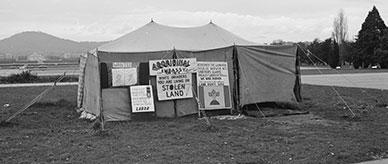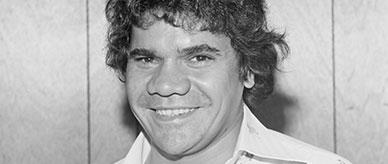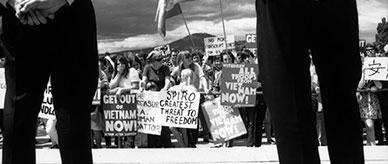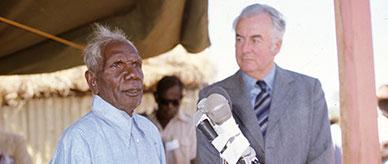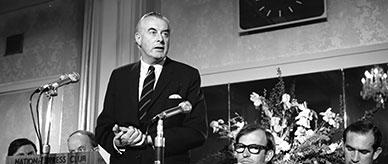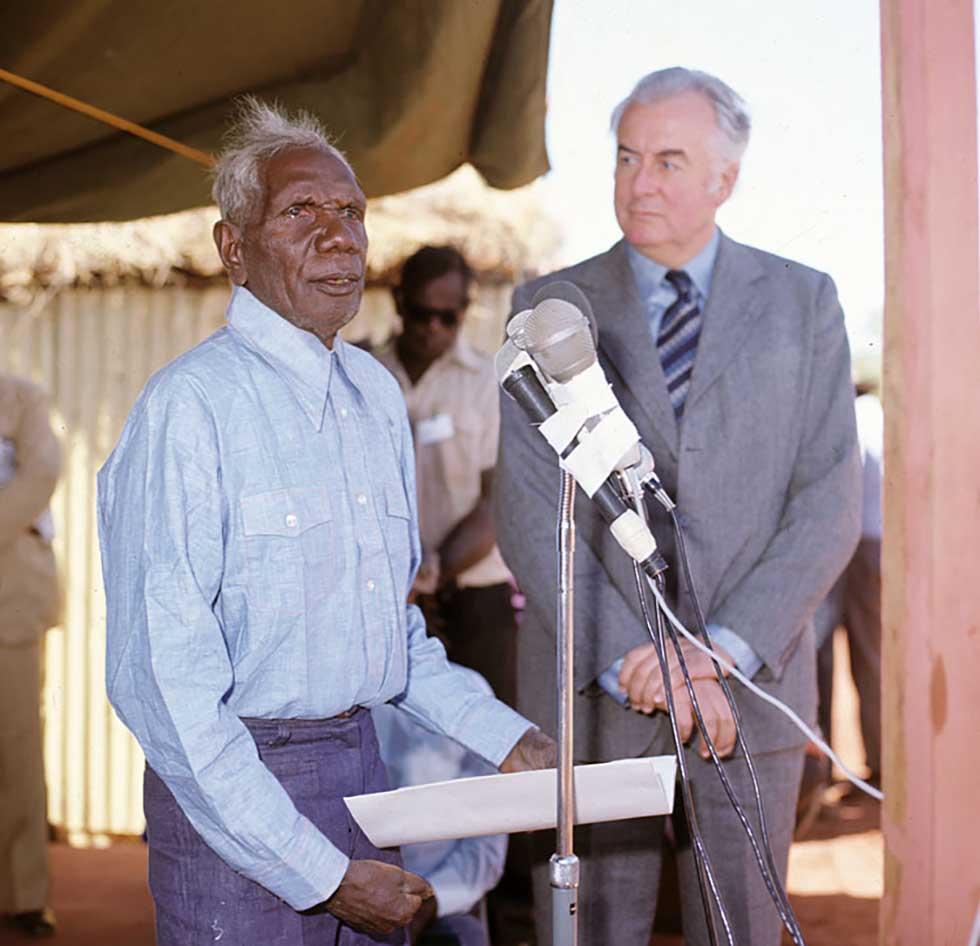


About this record
This colour photograph, taken on 16 August 1975 at Daguragu (formerly known as Wattie Creek) in the Northern Territory, shows Gurindji Elder Vincent Lingiari speaking at a ceremony. The ceremony was to mark the transfer of leasehold title to the Gurindji. Lingiari is holding the official documents that have just been handed to him by Prime Minister Gough Whitlam, who is standing to Lingiari’s left.
Educational value
- This photograph records the historic moment when the Gurindji people of the Northern Territory became the first Aboriginal people to be granted leasehold title to their traditional lands. Nine years earlier, in 1966, 200 Aboriginal stockmen, led by Lingiari, had demanded equal pay with other stockmen at the Wave Hill cattle station and walked off the job. The station was on traditional Gurindji land and the demands soon included the return of their lands.
- The presence of Prime Minister Gough Whitlam in the photograph is a reminder of the crucial role of the federal government. The government had purchased the land from the British pastoral company Vestey’s before handing title to the Gurindji people at this ceremony. The title documents gave the Gurindji people ownership over 1250 square miles (3237 square kilometres) of their traditional land, about 600 kilometres south of Darwin.
- The Gurindji Elder Vincent Lingiari is pictured accepting the lease documents from Whitlam. In his speech, Lingiari stated that Aboriginal people and all other Australians should now ‘live happily together as mates’ and ‘not fight over anything’.
- At the ceremony, Whitlam poured a handful of soil slowly into Lingiari’s hands and said, ‘I put into your hands this piece of the earth itself as a sign that we restore them [lands] to you and your children forever’. In 1976 the land covered by the lease documents was converted to full freehold title under the Aboriginal Land Rights (Northern Territory) Act 1976. This gave the Gurindji the rights of land ownership. The land includes the community of Daguragu.
- At the time this photograph was taken, the Whitlam Labor government had appointed a Royal Commission under Justice Edward Woodward to lay the groundwork for legislation for Aboriginal land rights in the Northern Territory. Although the commission had not concluded its work at the time the Whitlam government was dismissed, the Aboriginal Land Rights (Northern Territory) Act 1976 was passed by the Fraser coalition government on 9 December 1976.
Acknowledgments
Learning resource text © Education Services Australia Limited and the National Archives of Australia 2010.
Related themes
Need help with your research?
Learn how to interpret primary sources, use our collection and more.

